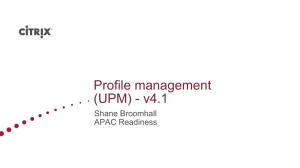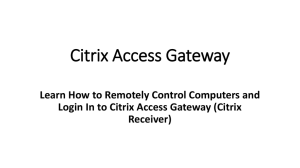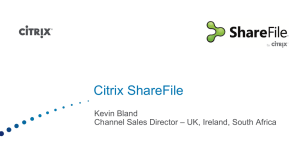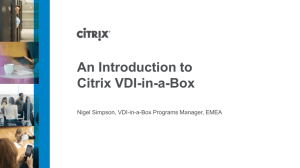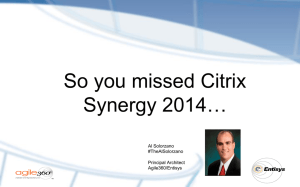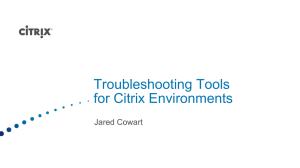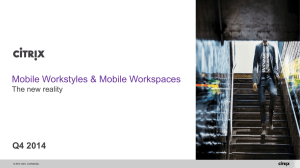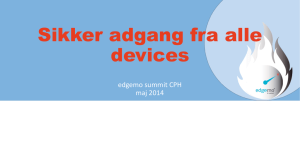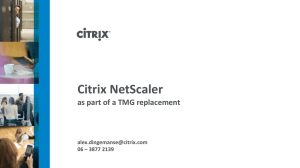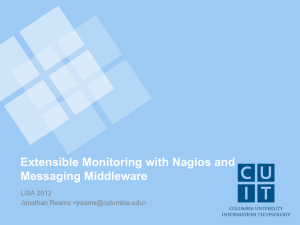2012 - Nagios
advertisement
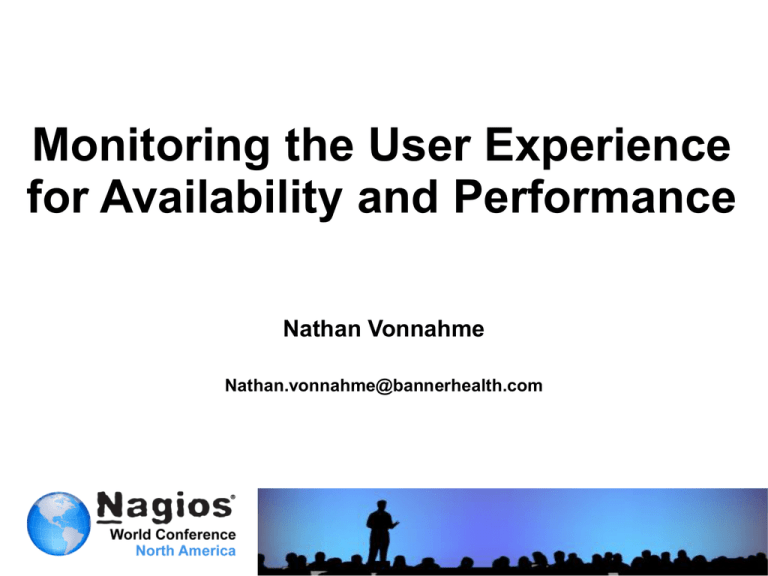
Monitoring the User Experience
for Availability and Performance
Nathan Vonnahme
Nathan.vonnahme@bannerhealth.com
Hi from Fairbanks
~100,000 people
2012
Not very big
Fairbanks Memorial Hospital
• ~150 beds
• ~1500 employees; ~40 IT dept.
• around 300 production servers (~75% Vmware)...
roughly 400 "apps“
• 24x7x365.25 as only healthcare can be
• Nagios monitors 113 hosts (includes some devices
like switches and UPSes), but 442 services.
• Nagios in the gaps
2012
Context
• Last year: “Monitoring and Test Driven Development”
2012
Last year – central idea
Monitoring tools are to the
sysadmin what testing
tools are to the developer.
2012
Last year
2012
Last year: “Not a CI [Continuous Integration] tool”
• Not as coupled to build processes
• We don’t build most of our software!
• Strengths in flexibility, alerting, production monitoring
• Potentially weak in being IT-focused instead of
customer-focused.
2012
QA and the Manufacturing Metaphor
Testing the end product
2012
The main idea
Can users actually use it?
Does it suck?
2012
Availability: Can users actually use it?
If the database server won’t
ping, that’s obviously
important.
If the network is down, duh.
But is your monitoring
coverage good enough to
prove that your end
product is delivering?
2012
Performance: Does it suck?
Let’s be objective.
The user doesn’t
care why.
2012
It matters
THIS
IS
“I started to learn that the days when I was happiest
NOT
were the days
withAN
lots of small successes and few
small frustrations.”
IPHONE
5!
–Joel Spolsky
2012
Two examples
1. A mission-critical legacy Windows app with a
complicated architecture
2. A cooler modern web app
2012
LEGACY WINDOWS APP
Cerner Electronic Medical Record
Note: Only fake patients in this presentation.
Complex architecture
• SAN
s
• AIX
• Citrix
• Oracle
• Network
• Middle- •
ware
•
• Another
SAN
• VMWare
• Window
Desktop
Everything x 2
for High
Availability
A quick definition of Citrix
The users are remote-controlling the application
running on the Citrix server.
The “client” runs on the Citrix server. The user’s
actual workstation runs a “thin client”.
90% or more of Cerner customers use Citrix.
For comparison: old school “fat client”
2012
Complex support team
2012
Complex monitoring
• Not just Nagios for monitoring.
• Most things are well-monitored by Somebody
• Certain things are “lost and found” and Nobody
wants to touch them.
2012
Can the users actually use it?
AutoIt lets us drive it like a user.
1. Log in
2. Search for a (fake) patient
3. Open the patient’s chart.
2012
Do it live.
2012
The Live Demo
Interactive demo with a test patient in production.
2012
Runify
"c:\program
files\nsclient++\scripts\check_pow
erchart.exe" fat –w5,1,1 -c40,5,5
• Compiled .exe
• Use fat or citrix client
• WARNING if more than 5,1,1 seconds for
login, search, chart
• CRITICAL over 40,5,5
2012
The AutoIt Script
Open in SciTE and glance through.
Note, Nagios.com has a couple of good articles by
Sam Lansing about using AutoIt.
Also see the presentation he did just before this
one!
2012
NSCP config
[/settings/external scripts/scripts]
check_ctx = scripts\check_powerchart.exe
citrix -w20,5,5 -c40,5,5
check_fat = scripts\check_powerchart.exe
fat -w20,5,5 -c40,5,5
2012
Gotchas: too many running at once
Runs a KillHungProcesses() routine at
beginning and end to clean them up.
Also set max_check_commands=1 in config for this
host.
2012
Gotchas: Occasional popups
AdlibRegister("HandleRelationship")
Func HandleRelationship()
If WinActive("Assign a Relationship") Then
Send("cc{ENTER}")
EndIf
EndFunc
...
AdlibUnRegister("HandleRelationship")
2012
Gotchas: Stupid typer
I repeatedly mistakenly added lines to the wrong
section of the nsclient.ini file.
2012
Gotchas: Service vs. Interactive GUI
2012
29
Gotchas: AutoIt output to STDOUT
You have to compile
to .exe with
“Console”
checkbox or
/console switch
on commandline
aut2exe compiler
"%programfiles%\Autoit3\aut2exe\aut2exe.exe" /in check_powerchart.au3
/console /nopack
2012
Gotchas: Annoying phantom icons in the tray
Slow too!
Solution: LP#TrayIconBuster
2012
31
The results: Citrix
1 week of 15
minute
samples
2012
The results:
Fat client
Note the much
different Y axis
scale
2012
Citrix vs Fat: icon to login (zoomed to 1.5 days)
2012
Citrix vs Fat: open one patient’s chart
2012
The advantages
• Continuous monitoring of the end product
• Nagios alerting, escalating, whatever.
• Control/experiment
• Just the two (Citrix vs fat) tell us a lot
• We have a historical benchmark to compare anomalies
with
• We’ve already identified a symptomatic Citrix problem
we can treat with a Nagios event handler.
2012
Still TODO:
Thresholds don’t yet affect OK/WARNING/CRITICAL
Thresholds in perfdata
Make it less noisy for less ignorable notifications
Make it run more often with tighter thresholds now
that we have a benchmark.
• Move it to a dedicated VM/user accounts
• More experiment groups
•
•
•
•
• No antivirus
• No Citrix printers
• No VMWare (fat, no Citrix)
2012
Questions/comments about this example?
2012
MODERN WEB APP
2012
Demo
fairbanks.bannerhealth.com/
cpoe_ordersets
It’s not a fair comparison, just an example.
Modern == Ajax
Notice there’s not a full page
load.
How do we tell if users can
actually use this?
How can we tell if it sucks?
2012
Options: Perl/PHP
I’ve done this… Symfony
functional scripts, for
example.
They’ll never do JavaScript
or AJAX.
I worry it won’t match the
top level, what the user
sees.
2012
Options: Selenium
• Runs a real browser or browsers, kind of like
AutoIt
• Other people are using it quite successfully (e.g.
Nathan Broderick 2011; Sam Lansing 2012)
• I have not gotten into it… images of too many
browser windows?
• Not very mobile-like
2012
PhantomJS
Headless webkit
As of July 2012 [webkit] has the most market
share of any layout engine at over 40% of
the browser market share according
to StatCounter.
-- http://en.wikipedia.org/wiki/WebKit
2012
PhantomJS
• Allows you to write client scripts in JavaScript,
executed by its own fast V8 engine
• “Always bet on JS” – Brendan Eich, original author of
JavaScript
• JavaScript is funny in that most people don’t actually
learn it before they start using it. – Douglas Crockford
(paraphrase), author of JavaScript: The Good Parts
2012
CasperJS
Nicer JS API on top of PhantomJS
2012
SHOW ME THE CODEZ
Quick Walkthrough in Aquamacs or Gist
Demo failure + screenshot
2012
Works on Nagios XI host
• A little bit heavy (it is firing up a WebKit)
• Zombiejs looks promising as a lighter (pure JS in
Node) JS-capable headless browser
• Quick CasperJS install instructions on my blog,
n8v.enteuxis.org
2012
The results – 10 minute interval
Boring… note total amplitude.
2012
The benefits
• Ongoing assurance that it is basically usable
• If it’s usable, all its layers must be working.
• Benchmarked performance so we can evaluate
the end result of changes
2012
Still TODO
• Check timestamp at bottom of page
• Run the same checks on an internal development
version
• Upgrade jQuery UI and see if performance
changes
• Check from an Internet host
2012
Main idea again
Can the users actually use it?
Does it suck?
2012
Concluding Questions/comments
JS Sample Code at
gist.github.com/n8v
Email me if you want the AutoIt code.
2012
Sneak peek
./check_facebook_friends.js -u
nathan.vonnahme -w @202 -c @203
Come to my other talk, “Writing Custom Nagios
Plugins” Friday morning to see how it works.
2012

